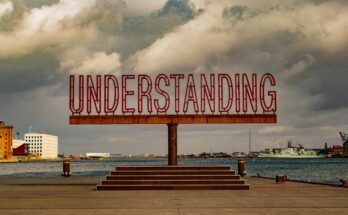Having an accident can be a distressing experience. However, it’s important that you take the proper steps after an accident to ensure your rights and financial well-being are protected. In this guide, we’ll break down everything you need to know about obtaining the right insurance coverage after an accident in 2024.
Reporting the Accident Promptly
The very first thing you should do after any accident, regardless of fault or severity, is report the incident to your insurance company. Even if the accident only involved minor property damage and no injuries, it’s still crucial to notify your provider right away. Most insurers require you to report claims within 30-90 days from the date of loss, depending on your specific policy terms. Failing to report the accident promptly could risk your claim being denied altogether due to a missed deadline.
If you need to file a claim with your insurance company, be prepared to provide key details about the accident, such as the date and time it occurred, your policy number, names and contact info of any other drivers/witnesses involved, details of the incident, location, police report number (if applicable), and description of any damages to vehicles or property. Photographic documentation of the accident and damages can further solidify your claim. Getting all this basic information to your insurer within the required timeframe establishes your right to file a claim properly.
Understanding Available Coverage Types
After an accident, it’s essential to review your existing auto insurance policy carefully to confirm the types of coverage you currently have. The most common types include:
Bodily Injury Liability: Provides financial coverage for medical expenses and lost wages incurred by others due to an accident you caused. Standard limits are usually $25,000 per person and $50,000 per accident.
Property Damage Liability: This covers your repair or replacement cost after an accident, like another vehicle. Common limits are $25,000 or $50,000.
Personal Injury Protection (PIP): Pays for medical bills, lost wages, and funeral costs for you and your passengers, regardless of fault. Coverage varies by state, but typical maximums are $10,000.
Collision: Repairs or replaces your own vehicle if it’s damaged in an accident, irrespective of fault. Subject to a deductible, which is usually $500-1000.
Comprehensive: Covers losses not caused by a collision, like theft, vandalism, fire, falling objects, or contact with animals. Also has a standard deductible.
Evaluate if your existing coverage limits will be sufficient based on the accident details and costs of any repairs/injuries. Higher liability limits beyond the state minimums are recommended in most situations.
Understanding Covered vs. At-Fault Accidents
Determining fault for an accident is a crucial factor in insurance claims. Claims are handled very differently depending on whether the accident is considered “covered” by your policy or if you are deemed “at fault.”
Covered Accidents
For an accident to be deemed covered, the insurer’s investigation must conclude that you played a minimal role in causing it. In these cases:
- Your insurer will pay for repairs to your vehicle through collision coverage if purchased, less your deductible.
- They will cover your required liability costs to the other parties involved. This protects you from financial responsibility.
- Your rates generally will not increase following a covered accident due to lack of fault.
At-Fault Accidents
When you are determined primarily or majorly at fault by the insurers, it’s considered an at-fault claim on your record. Then:
- Collision coverage cannot pay to repair your own vehicle since you caused the loss.
- Your insurer will have to pay the other parties’ damages through your liability coverage.
- Your premiums will almost always increase following an at-fault incident, sometimes substantially.
- Two or more at-fault accidents in 3-7 years could mean non-renewal of your policy or higher “risk” rates.
Understanding the insurance implications of an at-fault determination is important, as it can impact your policy costs and coverage eligibility going forward.
Should You Increase Your Coverage Limits?
Given rising medical costs and repair expenses, it’s wise to reevaluate your liability and property damage limits after an accident occurs, even if covered, to confirm you have adequate protection in place. Here are some things to consider:
- Higher population density areas, where accident costs are typically greater, warrant increased liability limits like $100,000/$300,000.
- Review bills, estimates, and lost wages from the recent accident. If close to or exceeding current limits, increase coverage amounts.
- Consult with your agent to understand liability judgments and claims payout trends over the past 5-10 years in your location.
- Consider buying an umbrella liability policy for additional protection over your underlying auto and home policies. Umbrella policies start at $1 million and can provide vital protection in catastrophic injury cases.
Evaluating and possibly increasing coverage specifics, especially following an incident, can help give you greater long-term financial protection and peace of mind. Review options with your provider.
Deciding if You Need Non-Owned Auto Coverage
Non-owned auto liability insurance provides protection if you borrow or rent vehicles that you don’t own. It’s insurance you may want to purchase depending on your specific situation:
- Important for those who frequently drive rental cars for work or leisure. Standard policies won’t cover rentals.
- College students or adults who borrow friends’/relatives’ vehicles sometimes may want this supplemental coverage.
- Rideshare drivers like Uber/Lyft need it since their personal insurance won’t cover them while driving for work.
- Cost is usually only an additional $15-30 annually but provides liability protection in covered non-owned vehicles.
While not crucial for all drivers, evaluating the need for non-owned coverage is recommended after an accident to ensure adequate liability protection no matter what vehicle you may be driving. Discuss options with your insurer.
Shopping for a New Insurance Company
If premium increases from an at-fault accident make your current policy too expensive, or you’ve lost discounts that outweigh rate hikes, it’s time to research other insurer options. However, do not cancel your existing coverage until obtaining a new policy, as this leaves you uninsured during the transition period. Here’s how to start comparing:
- Visit 3-5 highly rated insurers’ websites to get quotes factoring in your details and driving history.
- Speak to local independent agents who can provide multiple company quotes at once based on your profile.
- Consider top-rated companies like Geico, Progressive, State Farm, Allstate, Liberty Mutual and Farmers.
- Look at more than just rates – confirm coverage types and limits, discounts, customer satisfaction ratings and claims handling reputation matters too.
- Negotiate hard if quotes are higher than expected to potentially secure lower prices. Providers want your business.
Shopping for a better value is prudent after an accident, as rates can often be reduced significantly by finding the right new insurer. Ensure a seamless transition by lining up replacement coverage before canceling the original policy.
Dealing with Rate Increases Right Away
Even with a covered accident claim, it’s still possible rates could rise modestly at your next renewal period. However, there are steps to potentially limit post-accident premium hikes:
- Check for accident “forgive” policies for one minor fender bender without a ticket within 3 years. Some insurers waive surcharges.
- Enroll in advanced accident prevention courses for a discount. Examples are AARP’s driving courses or Defensive Driving courses.
- Ask about safe driver discounts or bundling policies like auto+home for multi-policy savings of 5-10%.
- Maintain good credit as most insurers use this as a rating factor and better credit means lower rates.
- Ensure you receive all accident-related discounts already deserved, like those for anti-theft devices, good student status, or low annual mileage.
- Appeal rate increases deemed too steep compared to your loss history by providing any mitigating details to regulators if needed.
Taking proactive steps could help reduce post-accident premium bumps while still benefiting from coverage needed in today’s litigious climate.
Working with Insurance Adjusters
In the aftermath of an accident, expect contact from claims representatives or insurance adjusters who will want to inspect vehicle damage, take statements, review details and determine fault and coverage applicability. Cooperate fully:
- Answer all questions truthfully based on your recollection to establish accurate facts.
- Sign necessary documents regarding settlements, payments or repairs as requested.
- Provide complete contact/registration information for all parties involved, including passengers.
- Make sure damage photos are submitted to corroborate appraisals and estimates.
- Return promptly to the insurer if follow-up queries arise even months later as cases are revisited.
- Do not handle the claim alone – work with a reputable independent adjuster or lawyer if needed for major claims.
Keep detailed notes of all communications and ensure the insurer promptly processes any payments owed like lost wages reimbursement based on policy provisions discussed.
Getting Insurance Right After an Accident: Frequently Asked Questions
1. What should I do if the accident wasn’t my fault, but the other driver’s insurance won’t cover the damages?
If the other driver was at fault but their insurance denied your claim, you’ll need to file under your own collision coverage if purchased. Make sure to provide your insurer details proving the other party caused the accident, then they can subrogate to reclaim costs from the at-fault party once liability is established.
2. How long will a reported accident stay on my driving record?
Most insurer records show accidents for 3-7 years depending on filing state laws. They may surcharge rates for 3 years even if it was deemed not at fault. After the record-retention period ends, prior incidents typically no longer impact your rates going forward.
3. Can I still make a claim if the accident wasn’t reported right away?
If more than the required reporting timeframe passes, insurers can deny the claim for being late. However, some will accept delayed claims if you have a valid reason like hospitalization preventing earlier notice. It’s best to report all incidents, no matter when, and let the insurer decide if a late submission is acceptable.
4. How can I appeal an at-fault accident determination I do not agree with?
Request a formal written explanation from the insurer and provide any evidence disputing their version like accident reports, photos, or witness statements within 30 days. Escalate as needed to a claims manager or Insurance Commissioner if still not satisfied with the decision. Hiring an attorney may help overturn incorrect fault rulings.
5. What should you not do post-accident?
Do not admit fault or liability at the scene, offer money to other parties, discuss settlement details with anyone other than insurance reps, make unnecessary vehicle repairs, or dispose of parts until an agreed resolution is reached with your insurer to avoid claim denials.



